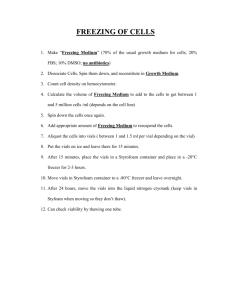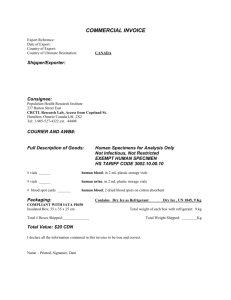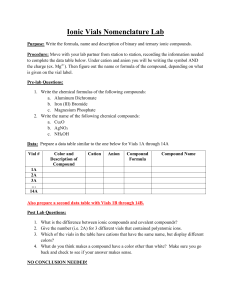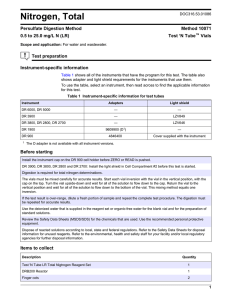Procedure for freezing down cells
advertisement
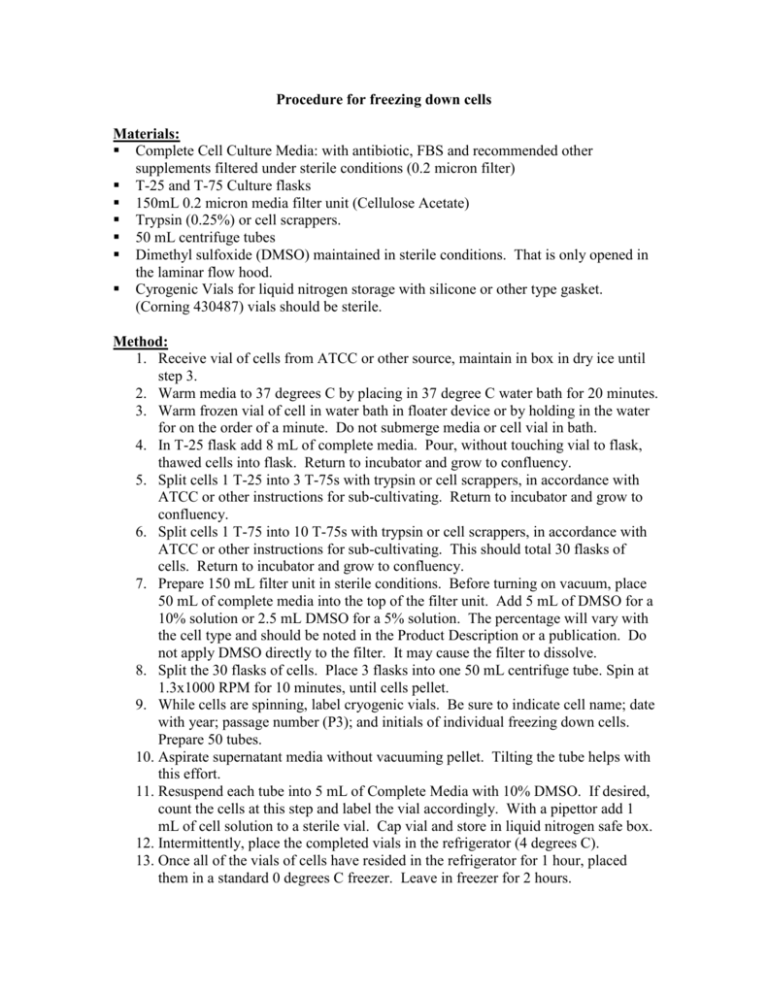
Procedure for freezing down cells Materials: Complete Cell Culture Media: with antibiotic, FBS and recommended other supplements filtered under sterile conditions (0.2 micron filter) T-25 and T-75 Culture flasks 150mL 0.2 micron media filter unit (Cellulose Acetate) Trypsin (0.25%) or cell scrappers. 50 mL centrifuge tubes Dimethyl sulfoxide (DMSO) maintained in sterile conditions. That is only opened in the laminar flow hood. Cyrogenic Vials for liquid nitrogen storage with silicone or other type gasket. (Corning 430487) vials should be sterile. Method: 1. Receive vial of cells from ATCC or other source, maintain in box in dry ice until step 3. 2. Warm media to 37 degrees C by placing in 37 degree C water bath for 20 minutes. 3. Warm frozen vial of cell in water bath in floater device or by holding in the water for on the order of a minute. Do not submerge media or cell vial in bath. 4. In T-25 flask add 8 mL of complete media. Pour, without touching vial to flask, thawed cells into flask. Return to incubator and grow to confluency. 5. Split cells 1 T-25 into 3 T-75s with trypsin or cell scrappers, in accordance with ATCC or other instructions for sub-cultivating. Return to incubator and grow to confluency. 6. Split cells 1 T-75 into 10 T-75s with trypsin or cell scrappers, in accordance with ATCC or other instructions for sub-cultivating. This should total 30 flasks of cells. Return to incubator and grow to confluency. 7. Prepare 150 mL filter unit in sterile conditions. Before turning on vacuum, place 50 mL of complete media into the top of the filter unit. Add 5 mL of DMSO for a 10% solution or 2.5 mL DMSO for a 5% solution. The percentage will vary with the cell type and should be noted in the Product Description or a publication. Do not apply DMSO directly to the filter. It may cause the filter to dissolve. 8. Split the 30 flasks of cells. Place 3 flasks into one 50 mL centrifuge tube. Spin at 1.3x1000 RPM for 10 minutes, until cells pellet. 9. While cells are spinning, label cryogenic vials. Be sure to indicate cell name; date with year; passage number (P3); and initials of individual freezing down cells. Prepare 50 tubes. 10. Aspirate supernatant media without vacuuming pellet. Tilting the tube helps with this effort. 11. Resuspend each tube into 5 mL of Complete Media with 10% DMSO. If desired, count the cells at this step and label the vial accordingly. With a pipettor add 1 mL of cell solution to a sterile vial. Cap vial and store in liquid nitrogen safe box. 12. Intermittently, place the completed vials in the refrigerator (4 degrees C). 13. Once all of the vials of cells have resided in the refrigerator for 1 hour, placed them in a standard 0 degrees C freezer. Leave in freezer for 2 hours. 14. After the 2 hours in the freezer, place the cells in a -80 degrees C freezer, overnight (~14-16 hours). 15. Place in liquid nitrogen. 16. Allow the cells to remain in liquid nitrogen overnight before thawing and maintain the cell line. Ideally the cells can be maintained in liquid nitrogen for 6 months. Practically they can be maintained longer, on the order of years. Note: the slow freeze down can be shorted with a Cyro Freezing Container (Nalgene: # 5100-0001) wherein the cells are placed in a isopropyl alcohol bath and placed directly in -80 degree C freezer and then liquid nitrogen the next day. These container hold approximately 18 cell vials, so multiple ones would be needed to freeze down 50 vials. Additionally, the IPA vapors will dissolve normal Sharpie markings and an industrial or alcohol-resistant marker must be used to mark the vials. Things to avoid: Long term storage in -80 degrees C. Growing cells past P10, particularly with trypsin is used. This will avoid cell senescence. Cells should not be grown and froze down multiple times. This alters the cell nature and will cause for altered behavior. Freezing down cells are a shock to the cells. The whole process of freezing down cells in a large batch is to variance due to altered handling of cells. This method, and maintaining them in liquid nitrogen, limits the variability produced with poor cell management. Freeze cells slowly to limit death and thaw them quickly to prevent the same. Kristy Ainslie July 5, 2007
